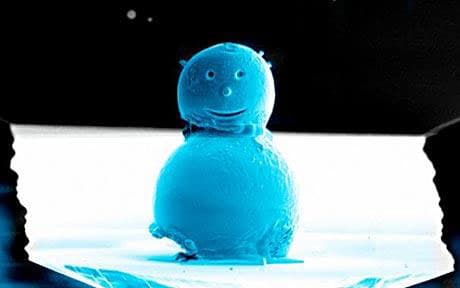The worlds smallest snowman. from nanowerk The snowman is 10 µm across, 1/5th the width of a human hair. The snowman was made from two tin beads used to calibrate electron microscope astigmatism. The eyes and smile were milled using a focused ion beam, and the nose, which is under 1 µm wide,… Continue reading The worlds smallest snowman
The worlds smallest snowman


